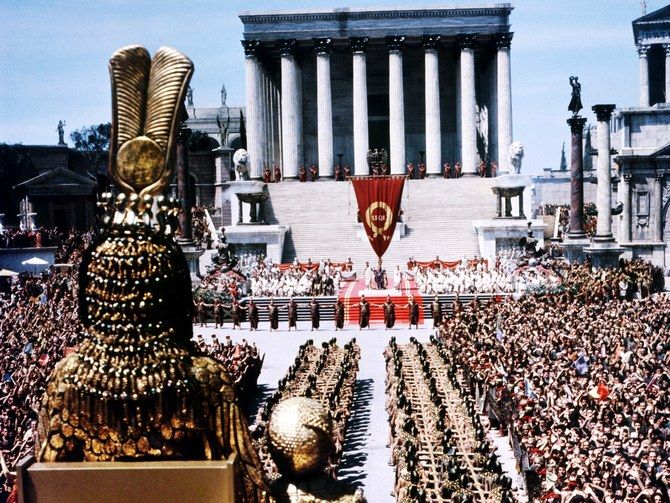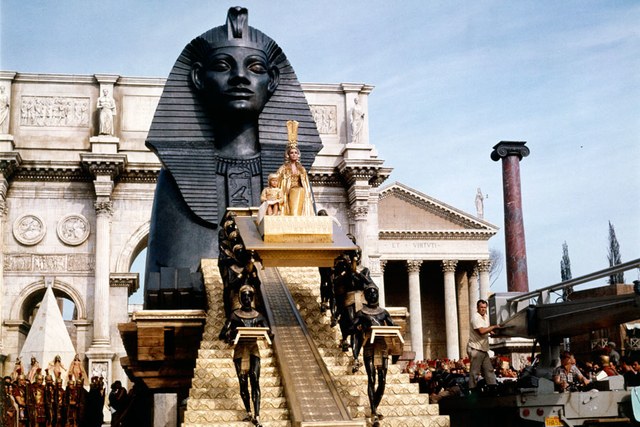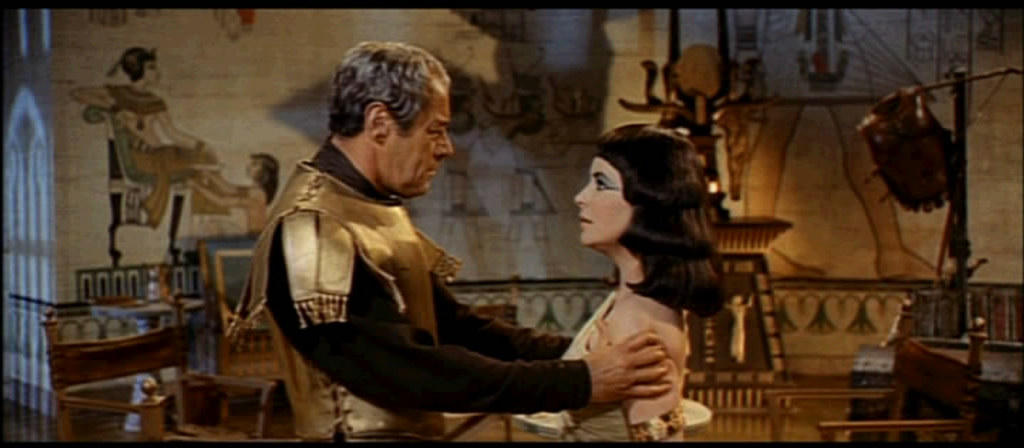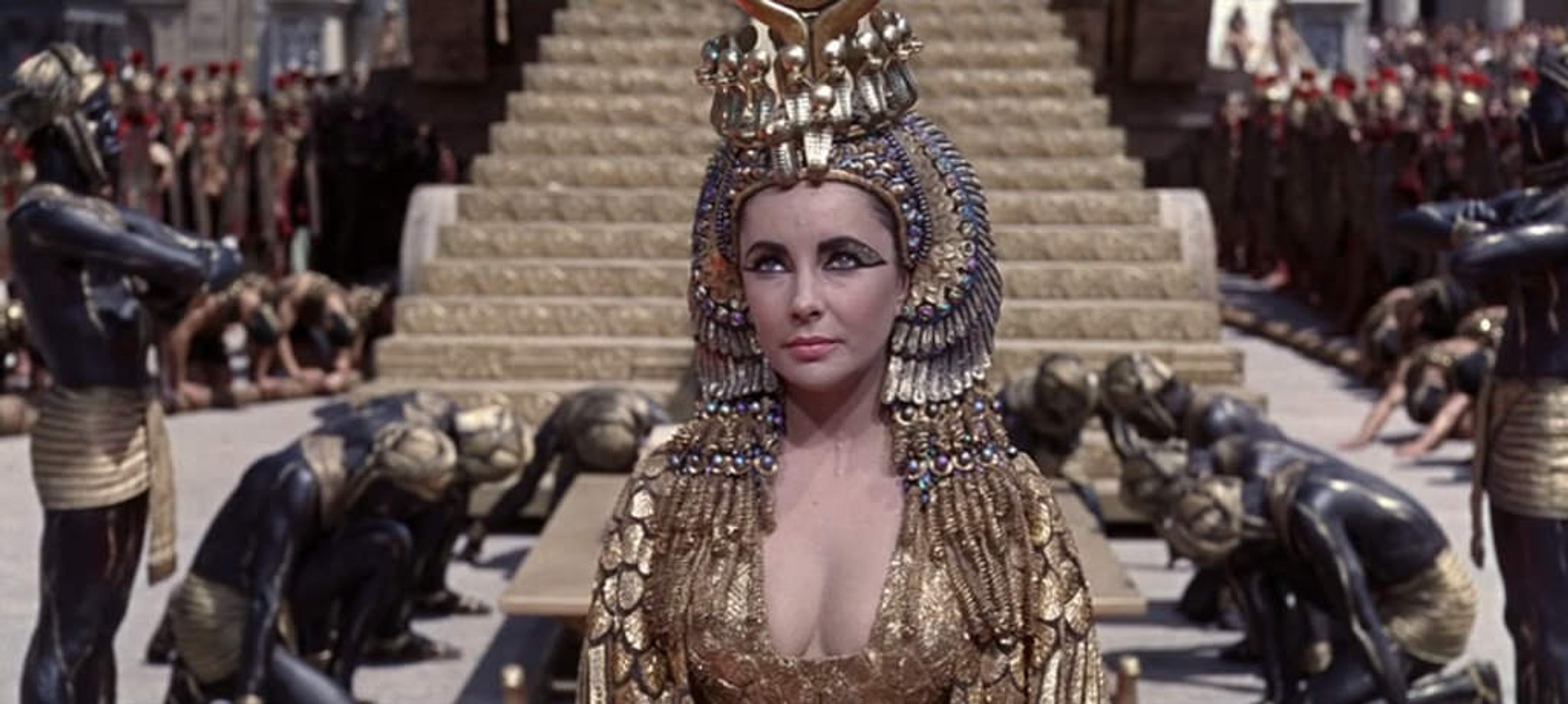
‘Extravagant’ is perhaps the perfect word to describe Cleopatra, the Oscar-winning 1963 film. An almost five hour epic starring Elizabeth Taylor (Cleopatra), Richard Burton (MarkAntony) and Rex Harrison (Julius Caesar), Cleopatra takes audiences through the tale of the famous ancient Egyptian queen—from her claim to the throne and love affair with Julius Caesar, to her romance with Mark Antony and eventual downfall.
Soon after its release, the film was nominated for nine Oscars, ultimately winning four: Best Art Direction, Best Cinematography, Best Visual Effects and Best Costume. All of these elements, and most importantly the costumes, were indeed extravagant. After all, Cleopatra was the most expensive film that had ever been made at the time of its release.
Yes, the costumes were vibrantly colorful, luxurious and awe-inspiring, but were they accurate? Not entirely. For the most part, the film’s depiction of how things would have actually been like in Ancient Egypt and Rome are most likely far from reality.
This is particularly true when it comes to Cleopatra’s costumes. While Ancient Egyptians (especially royalty) were known to adorn themselves with jewels and elaborate pieces of jewelry, the film’s costumes imagine an Ancient Egyptian sense of style that incorporates very modern 1960s aesthetics when it comes to cuts and form-fitting dresses.

Ancient Egyptians were also known to wear wigs; while they do make use of this historical fact in the film, Taylor’s hair would oftentimes also be presented in very 1960s coiffed hairstyles. Besides costumes and hair, Cleopatra’s makeup, though largely Ancient Egyptian-inspired, hosts a touch of 1960s glam to the overall look.
In addition to this, there were certain elements to the film that seemed quite far off to the depiction of the time. This was especially evident in the questionable—and highly dramatic—entrance of Cleopatra to Rome. The entrance was very ‘Prince Ali’ Aladdin-esque, with multitudes of dancers dressed in questionable costumes, grand ornaments, flying pigeons and so much more.

In addition to the visual aspect, there is also the question of the historical accuracy of the actual story or events that take place. The film’s story actually gives a rather accurate account of history, breaking up Cleopatra’s involvement with Caesar and her rise to the throne in the first half of the film, and then her involvement with Mark Anthony following Caesar’s death and her ultimate downfall in the second half of the film. There may have been some alterations for the sake of drama, especially with romances and the actors’ general performances, but other than that, the events are quite true to history.

Ultimately, the film is actually a good watch for those who would like to learn more about the life of Cleopatra and the events that took place in history at the time, keeping in mind that there are quite a few dramatic elaborations and exaggerations here and there.
Unlike the storyline however, the film’s overall aesthetic is not the most accurate representation of history—it is after all, a Hollywood film, made to entertain and give people something they would want or love to see.
The film is dramatic in every sense—from the costumes and scenery, to the romances and performances. It may seem exaggerated and stylized to the point that it may even anger viewers today (especially as a result of the lack of diversity in the mainly caucasian cast), however, one must keep in mind that it was released at a different time, and had to cater to what was popular at the time. Furthermore, the film had to keep the drama alive—and that it did.

With the upcoming release of a new Cleopatra biopic, and the controversy the casting choice has been met with, it is worth noting how far we have come in terms of social change. Although the reality of things is that Hollywood tends to opt for lucrative endeavors—and this may come in the form of having an actress like Gal Gadot star in the upcoming remake—it is worth noting that people’s voices are now loud enough to be heard when it comes to casting choices.
While the casting for the remake is questionable, time will tell whether or not Hollywood will give us another mere ‘extravagant’ blockbuster film, or if it will attempt to tell us a story that stays true to the grandness of Egyptian history.






Comments (3)
[…] https://egyptianstreets.com/2020/10/17/a-closer-look-at-hollywoods-historical-accuracy-in-the-1963-f… […]
[…] A Closer Look at Hollywood’s Historical Accuracy in the 1963 Film ‘Cleopatra’ […]